Premium Only Content
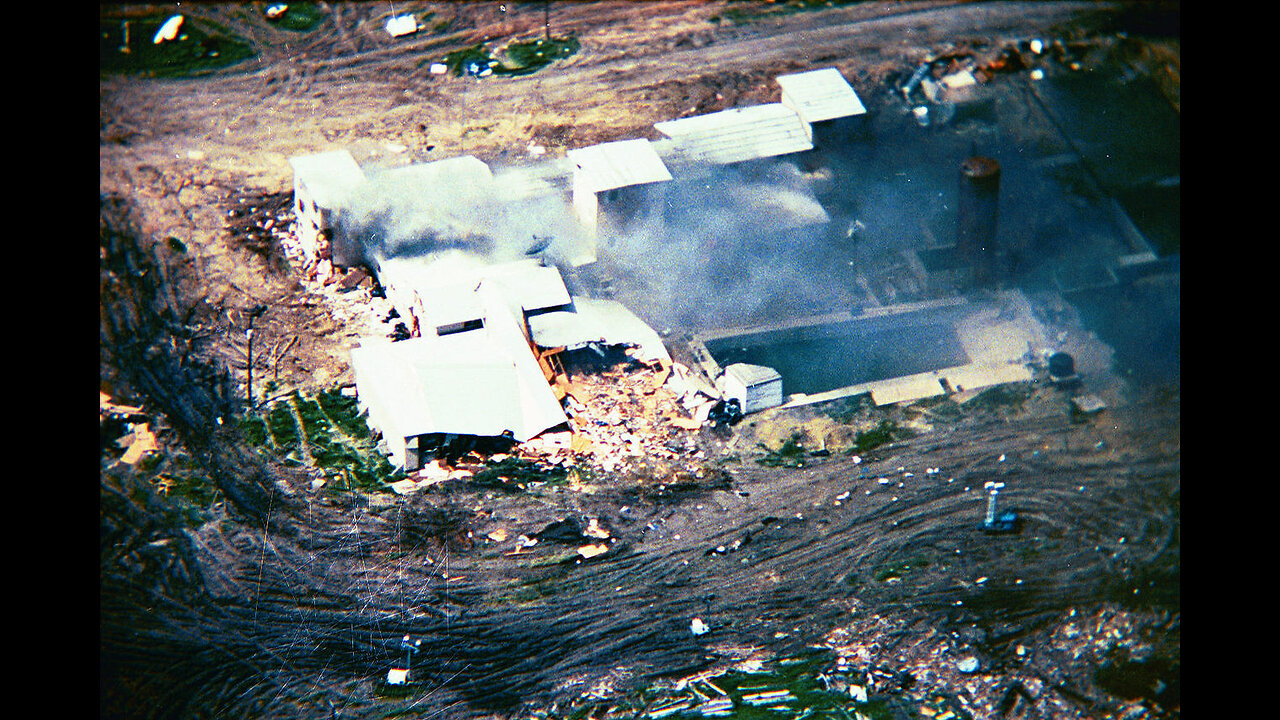
The United States, Terrorism & Oklahoma City Federal Building Bombing (2000)
The Oklahoma City bombing was a domestic terrorist truck bombing of the Alfred P. Murrah Federal Building in Oklahoma City, Oklahoma, United States, on April 19, 1995, the second anniversary of the end to the Waco siege. At the time, the bombing was considered the deadliest act of domestic terrorism in U.S. history; however, the Tulsa race massacre in 1921, also in Oklahoma, is now estimated to have claimed more lives.
Perpetrated by anti-government extremists Timothy McVeigh and Terry Nichols, the bombing occurred at 9:02 a.m. and killed 168 people, injured 680, and destroyed more than one-third of the building, which had to be demolished. The blast destroyed or damaged 324 other buildings and caused an estimated $652 million worth of damage.[1][2][3] Local, state, federal, and worldwide agencies engaged in extensive rescue efforts in the wake of the bombing. The Federal Emergency Management Agency (FEMA) activated 11 of its Urban Search and Rescue Task Forces, consisting of 665 rescue workers.[4][5]
Within 90 minutes of the explosion, McVeigh was stopped by Oklahoma Highway Patrolman Charlie Hanger for driving without a license plate and arrested for illegal weapons possession.[6][7] Forensic evidence quickly linked McVeigh and Nichols to the attack; Nichols was arrested,[8] and within days, both were charged. Michael and Lori Fortier were later identified as accomplices. McVeigh, a veteran of the Gulf War and a sympathizer with the U.S. militia movement, had detonated a Ryder rental truck full of explosives he parked in front of the building. Nichols had assisted with the bomb's preparation. Motivated by his dislike for the U.S. federal government and its handling of Ruby Ridge in 1992 and the Waco siege in 1993, McVeigh timed his attack to coincide with the second anniversary of the fire that ended the siege in Waco.[9][10] Though not confirmed to be a direct connection to the bombing, white supremacist Richard Snell previously expressed a desire to blow up the Murrah Federal Building 12 years before the bombing took place.[11][12]
The official FBI investigation, known as "OKBOMB", involved 28,000 interviews, 3,200 kg of evidence, and nearly one billion pieces of information.[13] When the FBI raided McVeigh's home, they found a telephone number that led them to a farm where McVeigh had purchased supplies for the bombing.[14][15][16] The bombers were tried and convicted in 1997. McVeigh was executed by lethal injection on June 11, 2001, at the U.S. federal penitentiary in Terre Haute, Indiana. Nichols was sentenced to life in prison in 2004. In response to the bombing, the U.S. Congress passed the Antiterrorism and Effective Death Penalty Act of 1996, which limited access to habeas corpus in the United States, among other provisions.[17] It also passed legislation to increase the protection around federal buildings to deter future terrorist attacks.
Events
PlanningMotive
An aerial view from a helicopter of the Mount Carmel Center building. Large columns of smoke are arising from the left side of the building from a fire. One side of the building shows extensive damage. The building is surrounded by dirt paths.
McVeigh and Nichols cited the federal government's actions against the Branch Davidian compound in the 1993 Waco siege (shown above) as a reason why they perpetrated the Oklahoma City bombing.
The chief conspirators, Timothy McVeigh and Terry Nichols, met in 1988 at Fort Benning during basic training for the U.S. Army.[18] McVeigh met Michael Fortier as his Army roommate.[19] The three shared interests in survivalism.[20][21] McVeigh and Nichols were radicalized by white supremacist and antigovernment propaganda.[22][23] They expressed anger at the federal government's handling of the 1992 Federal Bureau of Investigation (FBI) standoff with Randy Weaver at Ruby Ridge, as well as the Waco siege, a 51-day standoff in 1993 between the FBI and Branch Davidian members that began with a botched Bureau of Alcohol, Tobacco, and Firearms (ATF) attempt to execute a search warrant. There was a firefight and ultimately a siege of the compound, resulting in the burning and shooting deaths of David Koresh and 75 others.[24] In March 1993, McVeigh visited the Waco site during the standoff, and again after the siege ended.[25] He later decided to bomb a federal building as a response to the raids and to protest what he believed to be U.S. government efforts to restrict rights of private citizens, particularly those under the Second Amendment.[10][26][27][28][29] McVeigh believed that federal agents were acting like soldiers, thus making an attack on a federal building an attack on their command centers.[30]
Target selection
Alfred P. Murrah Federal Building as it appeared before its destruction
McVeigh later said that, instead of attacking a building, he had contemplated assassinating Attorney General Janet Reno; FBI sniper Lon Horiuchi, who had become infamous among extremists because of his participation in the Ruby Ridge and Waco sieges; and others. McVeigh claimed he sometimes regretted not carrying out an assassination campaign.[27][31] He initially intended to destroy only a federal building, but he later decided that his message would be more powerful if many people were killed in the bombing.[32] McVeigh's criterion for attack sites was that the target should house at least two of these three federal law enforcement agencies: the Bureau of Alcohol, Tobacco, Firearms and Explosives (ATF), the Federal Bureau of Investigation (FBI), and the Drug Enforcement Administration (DEA). He regarded the presence of additional law enforcement agencies, such as the Secret Service or the U.S. Marshals Service, as a bonus.[33]
A resident of Kingman, Arizona, McVeigh considered targets in Missouri, Arizona, Texas, and Arkansas.[33] He said in his authorized biography that he wanted to minimize non-governmental casualties, so he ruled out Simmons Tower, a 40-story building in Little Rock, Arkansas, because a florist's shop occupied space on the ground floor.[34] In December 1994, McVeigh and Fortier visited Oklahoma City to inspect what would become the target of their campaign: the Alfred P. Murrah Federal Building.[26]
The nine-story building, built in 1977, was named for a federal judge and housed 14 federal agencies, including the DEA, ATF, Social Security Administration, and recruiting offices for the Army and Marine Corps.[35]
McVeigh chose the Murrah building because he expected its glass front to shatter under the impact of the blast. He also believed that its adjacent large, open parking lot across the street might absorb and dissipate some of the force, and protect the occupants of nearby non-federal buildings.[34] In addition, McVeigh believed that the open space around the building would provide better photo opportunities for propaganda purposes.[34] He planned the attack for April 19, 1995, to coincide with not only the second anniversary of the Waco siege but also the 220th anniversary of the Battles of Lexington and Concord during the American Revolution.[36] Rumors have also alleged that the bombing was also connected to the planned execution of Richard Snell, an Arkansas white supremacist who was a member of the Covenant, the Sword, and the Arm of the Lord (CSA) and who was set to be executed the day the bombing took place.[37] Prior to his execution, Snell "predicted" that a bombing would take place that day.[37] Though his execution was not confirmed to be a motive for the bombing, Fort Smith–based federal prosecutor Steven Snyder told the FBI in May 1995 that Snell wanted to blow up the Oklahoma City building as revenge for the IRS raiding his home.[38][11][12]
Gathering materials
A detailed map of Herington, Kansas, the general location where McVeigh and Nichols stored the ammonium nitrate fertilizer used for the construction of the bomb. The actual location of the storage unit was located along US Highway 77, adjacent to a Pizza Hut.
McVeigh and Nichols purchased or stole the materials they needed to manufacture the bomb and stored them in rented sheds. In August 1994, McVeigh obtained nine binary-explosive Kinestiks from gun collector Roger E. Moore, and with Nichols ignited the devices outside Nichols's home in Herington, Kansas.[39][40] On September 30, 1994, Nichols bought forty 50-pound (23 kg) bags of ammonium nitrate fertilizer from Mid-Kansas Coop in McPherson, Kansas, enough to fertilize 12.5 acres (5.1 hectares) of farmland at a rate of 160 pounds (73 kg) of nitrogen per acre (.4 ha), an amount commonly used for corn. Nichols bought an additional 50-pound (23 kg) bag on October 18, 1994.[26] McVeigh approached Fortier and asked him to assist with the bombing project, but he refused.[41][42]
McVeigh and Nichols robbed Moore in his home of $60,000 worth of guns, gold, silver, and jewels, transporting the property in the victim's van.[41] McVeigh wrote Moore a letter in which he claimed that government agents had committed the robbery.[43] Items stolen from Moore were later found in Nichols's home and in a storage shed he had rented.[44][45]
In October 1994, McVeigh showed Michael and his wife Lori Fortier a diagram he had drawn of the bomb he wanted to build.[46] McVeigh planned to construct a bomb containing more than 5,000 pounds (2,300 kg) of ammonium nitrate fertilizer mixed with about 1,200 pounds (540 kg) of liquid nitromethane and 350 pounds (160 kg) of Tovex. Including the weight of the sixteen 55-gallon drums in which the explosive mixture was to be packed, the bomb would have a combined weight of about 7,000 pounds (3,200 kg).[47] McVeigh originally intended to use hydrazine rocket fuel, but it proved too expensive.[41]
McVeigh and his accomplices then attempted to purchase 55-U.S.-gallon (46 imp gal; 210 L) drums of nitromethane at various NHRA Drag Racing Series events during the season. His first attempt was at the Sears Craftsman Nationals, held at Heartland Motorsports Park in Pauline, Kansas. World Wide Racing Fuels representative Steve LeSueur, one of three dealers of nitromethane, was at his unit when he noted a "young man in fatigues" wanted to purchase nitromethane and hydrazine. Another fuel salesman, Glynn Tipton, of VP Racing Fuels, testified on May 1, 1997, about McVeigh's attempts to purchase both nitromethane and hydrazine. After the event, Tipton informed Wade Gray of Texas Allied Chemical, a chemical agent for VP Racing Fuels, who informed Tipton of the explosiveness of a nitromethane and hydrazine mixture. McVeigh, using an assumed name, then called Tipton's office. Suspicious of his behavior, Tipton refused to sell McVeigh the fuel.[48]
The next round of the NHRA championship tour was the Chief Auto Parts Nationals at the Texas Motorplex in Ennis, Texas, where McVeigh posed as a motorcycle racer and attempted to purchase nitromethane on the pretext that he and some fellow bikers needed it for racing. However, there were no nitromethane-powered motorcycles at the meeting, and he did not have an NHRA competition license. LeSueur again refused to sell McVeigh the fuel because he was suspicious of McVeigh's actions and attitudes, but VP Racing Fuels representative Tim Chambers sold McVeigh three barrels.[49] Chambers questioned the purchase of three barrels, when typically no more than five gallons would be purchased by a Top Fuel Harley rider, and the class was not even raced that weekend.
McVeigh rented a storage space in which he stockpiled seven crates of 18-inch-long (46 cm) Tovex "sausages", 80 spools of shock tube, and 500 electric blasting caps, which he and Nichols had stolen from a Martin Marietta Aggregates quarry in Marion, Kansas. He decided not to steal any of the 40,000 pounds (18,000 kg) of ANFO (ammonium nitrate/fuel oil) he found at the scene, as he did not believe it was powerful enough (he did obtain 17 bags of ANFO from another source for use in the bomb). McVeigh made a prototype bomb that was detonated in the desert to avoid detection.[50]
Think about the people as if they were storm troopers in Star Wars. They may be individually innocent, but they are guilty because they work for the Evil Empire.
—McVeigh reflecting on the deaths of victims in the bombing[51]
Later, speaking about the military mindset with which he went about the preparations, he said, "You learn how to handle killing in the military. I face the consequences, but you learn to accept it." He compared his actions to the atomic bombings of Hiroshima and Nagasaki, rather than the attack on Pearl Harbor, reasoning it was necessary to prevent more lives from being lost.[51]
A detailed map of Junction City, Kansas (city limits in dark yellow), the general location where McVeigh purchased the Ryder truck used for the bomb. Grandview Plaza, the former location of the Dreamland Motel where McVeigh stayed in, is just to the east of Junction City along Interstate 70 (pink).
On April 14, 1995, McVeigh paid for a motel room at the Dreamland Motel in Junction City, Kansas.[52] The next day, he rented a 1993 Ford F-700 truck from Ryder under the name Robert D. Kling, an alias he adopted because he knew an Army soldier named Kling with whom he shared physical characteristics, and because it reminded him of the Klingon warriors of Star Trek.[53][54] On April 16, 1995, he and Nichols drove to Oklahoma City, where he parked a getaway car, a yellow 1977 Mercury Marquis, several blocks from the Murrah Federal Building.[55] The nearby Regency Towers Apartments' lobby security camera recorded images of Nichols's blue 1984 GMC pickup truck on April 16.[56] After removing the car's license plate, he left a note covering the Vehicle Identification Number (VIN) plate that read, "Not abandoned. Please do not tow. Will move by April 23. (Needs battery & cable)."[26][57] Both men then returned to Kansas.
Building the bomb
Geary County, Kansas (in red), where Geary Lake is located. This is where McVeigh and Nichols constructed the bomb.
On April 17–18, 1995, McVeigh and Nichols removed the bomb supplies from their storage unit in Herington, Kansas, where Nichols lived, and loaded them into the Ryder rental truck.[58] They then drove to Geary Lake State Park, where they nailed boards onto the floor of the truck to hold the 13 barrels in place and mixed the chemicals using plastic buckets and a bathroom scale.[59] Each filled barrel weighed nearly 500 pounds (230 kg).[60] McVeigh added more explosives to the driver's side of the cargo bay so he could ignite at close range with his Glock 21 pistol in case the primary fuses failed.[61] During McVeigh's trial, Lori Fortier stated that McVeigh claimed to have arranged the barrels in order to form a shaped charge.[46] This was achieved by tamping (placing material against explosives opposite the target of the explosion) the aluminum side panel of the truck with bags of ammonium nitrate fertilizer to direct the blast laterally towards the building.[62] Specifically, McVeigh arranged the barrels in the shape of a backwards "J"; he later said that for pure destructive power, he would have put the barrels on the side of the cargo bay closest to the Murrah Building; however, such an unevenly distributed 7,000-pound (3,200 kg) load might have broken an axle, flipped the truck over, or at least caused it to lean to one side, which could have drawn attention.[60] All or most of the barrels of ANNM (ammonium nitrate–nitromethane mixture) contained metal cylinders of acetylene intended to increase the fireball and the brisance of the explosion.[63]
McVeigh then added a dual-fuse ignition system accessible from the truck's front cab. He drilled two holes in the cab of the truck under the seat, while two more holes were drilled in the body of the truck. One green cannon fuse was run through each hole into the cab. These time-delayed fuses led from the cab through plastic fish-tank tubing conduit to two sets of non-electric blasting caps which would ignite around 350 pounds (160 kg) of the high-grade explosives that McVeigh stole from a rock quarry.[60] The tubing was painted yellow to blend in with the truck's livery, and duct-taped in place to the wall to make it harder to disable by yanking from the outside.[60] The fuses were set up to initiate, through shock tubes, the 350 pounds (160 kg) of Tovex Blastrite Gel sausages, which would in turn set off the configuration of barrels. Of the 13 filled barrels, nine contained ammonium nitrate and nitromethane, and four contained a mixture of the fertilizer and about 4 U.S. gallons (3.3 imp gal; 15 L) of diesel fuel.[60] Additional materials and tools used for manufacturing the bomb were left in the truck to be destroyed in the blast.[60] After finishing the truck bomb, the two men separated; Nichols returned home to Herington and McVeigh traveled with the truck to Junction City. The bomb cost about $5,000 (equivalent to about $11,000 in 2023) to make.[64]
Bombing
Map showing the layout of downtown Oklahoma City near the bombed building. The map uses simple shapes to identify some notable nearby buildings and roads. A large circle covers half the map, illustrating the extent of damage from the bomb. A red path shows the path McVeigh took to get to the building with the Ryder truck, and a blue line shows his escape on foot.
McVeigh's movement in the Ryder truck (red dashed line) and escape on foot (blue dashed line) on the day of the bombing
McVeigh's original plan had been to detonate the bomb at 11:00 a.m., but at dawn on April 19, 1995, he decided instead to destroy the building at 9:00 a.m.[65] As he drove toward the Murrah Federal Building in the Ryder truck, McVeigh carried with him an envelope containing pages from The Turner Diaries—a fictional account of white supremacists who ignite a revolution by blowing up the FBI headquarters at 9:15 one morning using a truck bomb.[26] McVeigh wore a printed T-shirt with Sic semper tyrannis ("Thus always to tyrants")—what according to legend Brutus said as he assassinated Julius Caesar and is also claimed to have been shouted by John Wilkes Booth immediately after the assassination of Abraham Lincoln—and "The tree of liberty must be refreshed from time to time with the blood of patriots and tyrants" (from Thomas Jefferson).[36] He also carried an envelope full of revolutionary materials that included a bumper sticker with the slogan, falsely attributed[66] to Thomas Jefferson, "When the government fears the people, there is liberty. When the people fear the government, there is tyranny." Underneath, McVeigh had written, "Maybe now, there will be liberty!" with a hand-copied quote by John Locke asserting that a man has a right to kill someone who takes away his liberty.[26][67]
McVeigh entered Oklahoma City at 8:50 a.m.[68] At 8:57 a.m., the Regency Towers Apartments' lobby security camera that had recorded Nichols's pickup truck three days earlier recorded the Ryder truck heading towards the Murrah Federal Building.[69] At the same moment, McVeigh lit the five-minute fuse. Three minutes later, still a block away, he lit the two-minute fuse. He parked the Ryder truck in a drop-off zone situated under the building's day-care center, exited, and locked the truck. As he headed to his getaway vehicle, he dropped the keys to the truck a few blocks away.[70]
An overhead view shows the Alfred P. Murrah building, half of it destroyed from the bomb's blast. Near the building are various rescue vehicles and cranes. Some damage is visible to nearby buildings.
An aerial view, looking from the north, of the destruction
At 9:02 a.m. (14:02 UTC), the Ryder truck, containing over 4,800 pounds (2,200 kg)[71] of ammonium nitrate fertilizer, nitromethane, and diesel fuel mixture, detonated in front of the north side of the nine-story Alfred P. Murrah Federal Building.[46] In total, 168 people were killed and hundreds more injured. One-third of the building was destroyed by the explosion,[72] which created a 30-foot-wide (9.1 m), 8-foot-deep (2.4 m) crater on NW 5th Street next to the building.[73] The blast destroyed or damaged 324 buildings within a four-block radius, and shattered glass in 258 nearby buildings.[1][2] The broken glass alone accounted for five percent of the death total and 69 percent of the injuries outside the Murrah Federal Building.[2] The blast destroyed or burned 86 cars around the site.[1][74] The destruction of the buildings left several hundred people homeless and shut down a number of offices in downtown Oklahoma City.[75] The explosion was estimated to have caused at least $652 million worth of damage.[76]
The effects of the blast were equivalent to over 5,000 pounds (2,300 kg) of TNT,[62][77] and could be heard and felt up to 55 miles (89 km) away.[75] Seismometers at the Omniplex Science Museum in Oklahoma City, 4.3 miles (6.9 km) away, and in Norman, Oklahoma, 16.1 miles (25.9 km) away, recorded the blast as measuring approximately 3.0 on the Richter magnitude scale.[78]
The collapse of the northern half of the building took roughly seven seconds. As the truck exploded, it first destroyed the column next to it, designated as G20, and shattered the entire glass facade of the building. The shockwave of the explosion forced the lower floors upwards, before the fourth and fifth floors collapsed onto the third floor, which housed a transfer beam that ran the length of the building and was being supported by four pillars below, as well as supporting the pillars that hold the upper floors. The added weight meant that the third floor gave way along with the transfer beam, which in turn caused the collapse of the building.[79]
Arrests
Initially, the FBI had three hypotheses about responsibility for the bombing: international terrorists, possibly the same group that had carried out the World Trade Center bombing; a drug cartel, carrying out an act of vengeance against DEA agents in the building's DEA office; and anti-government radicals attempting to start a rebellion against the federal government.[80]
An FBI sketch is shown on the left of the image on the suspected bomber looking forward, and on the right, an image of McVeigh looking at the camera. Two brown bars are visible on the top and bottom of the comparison image.
FBI sketch (left) and McVeigh (right).
McVeigh was arrested within 90 minutes of the explosion,[81] as he was traveling north on Interstate 35 near Perry in Noble County, Oklahoma. Oklahoma State Trooper Charlie Hanger stopped McVeigh for driving his yellow 1977 Mercury Marquis without a license plate, and arrested him for having a concealed weapon.[6][82] For his home address, McVeigh falsely claimed he resided at Terry Nichols's brother James's house in Michigan.[83] After booking McVeigh into jail, Trooper Hanger searched his patrol car and found a business card which had been concealed by McVeigh after being handcuffed.[84] Written on the back of the card, which was from a Wisconsin military surplus store, were the words "TNT at $5 a stick. Need more."[85] The card was later used as evidence during McVeigh's trial.[85]
While investigating the VIN on an axle of the truck used in the explosion and the remnants of the license plate, federal agents were able to link the truck to a specific Ryder rental agency in Junction City, Kansas. Using a sketch created with the assistance of Eldon Elliot, owner of the agency, the agents were able to implicate McVeigh in the bombing.[14][26][86] McVeigh was also identified by Lea McGown of the Dreamland Motel, who remembered him parking a large yellow Ryder truck in the lot; McVeigh had signed in under his real name at the motel, using an address that matched the one on his forged license and the charge sheet at the Perry Police Station.[7][26] Before signing his real name at the motel, McVeigh had used false names for his transactions. However, McGown noted, "People are so used to signing their own name that when they go to sign a phony name, they almost always go to write, and then look up for a moment as if to remember the new name they want to use. That's what [McVeigh] did, and when he looked up I started talking to him, and it threw him."[26]
McVeigh is located at the center of the image in a dark hallway wearing an orange jumpsuit and looking to the side. Around him are several FBI agents and police officers.
McVeigh about to exit the Perry, Oklahoma, courthouse on April 21, 1995
After an April 21, 1995, court hearing on the gun charges, but before McVeigh's release, federal agents took him into custody as they continued their investigation into the bombing.[26] Rather than talk to investigators about the bombing, McVeigh demanded an attorney. Having been tipped off by the arrival of police and helicopters that a bombing suspect was inside, a restless crowd began to gather outside the jail. While McVeigh's requests for a bulletproof vest or transport by helicopter were denied,[87] authorities did use a helicopter to transport him from Perry to Oklahoma City.[88]
Federal agents obtained a warrant to search the house of McVeigh's father, Bill, after which they broke down the door and wired the house and telephone with listening devices.[89] FBI investigators used the resulting information gained, along with the fake address McVeigh had been using, to begin their search for the Nichols brothers, Terry and James.[83] On April 21, 1995, Terry Nichols learned that he was being hunted, and turned himself in.[8] Investigators discovered incriminating evidence at his home: ammonium nitrate and blasting caps, the electric drill used to drill out the locks at the quarry, books on bomb-making, a copy of Hunter (a 1989 novel by William Luther Pierce, the founder and chairman of the National Alliance, a white nationalist group) and a hand-drawn map of downtown Oklahoma City, on which the Murrah Building and the spot where McVeigh's getaway car was hidden were marked.[90][91] After a nine-hour interrogation, Terry Nichols was formally held in federal custody until his trial.[92] On April 25, 1995, James Nichols was also arrested, but he was released after 32 days due to lack of evidence.[93] McVeigh's sister Jennifer was accused of illegally mailing ammunition to McVeigh,[94] but she was granted immunity in exchange for testifying against him.[95]
A Jordanian-American man traveling from his home in Oklahoma City to visit family in Jordan on April 19, 1995, was detained and questioned by the FBI at the airport. Several Arab-American groups criticized the FBI for racial profiling, and the subsequent media coverage for publicizing the man's name.[96][97] Attorney General Reno denied claims that the federal government relied on racial profiling, while FBI director Louis J. Freeh told a press conference that the man was never a suspect, and was instead treated as a "witness" to the Oklahoma City bombing, who assisted the government's investigation.[98]
Casualties
Diagram of the Alfred P. Murrah Federal Building with different color triangles on each floor. Some floors have more triangles than others, as well as different color ones. The title of the image is located on top, while a legend explaining the meaning of the different color triangles is on the bottom right.
Floor-by-floor diagram detailing the location of the victims in the Alfred P. Murrah Federal Building.
An estimated 646 people were inside the building when the bomb exploded.[99] By the end of the day, 14 adults and six children were confirmed dead, and over 100 injured.[100] The toll eventually reached 168 confirmed dead, not including an unmatched left leg that could have belonged to an unidentified 169th victim.[101][102] Most of the deaths resulted from the collapse of the building, rather than the bomb blast itself.[103] Those killed included 163 who were in the Alfred P. Murrah Federal Building, one person in the Athenian Building, one woman in a parking lot across the street, a man and woman in the Oklahoma Water Resources building and a rescue worker struck on the head by debris.[104]
The victims ranged in age from three months to 73 years and included three pregnant women.[105][104] Of the dead, 108 worked for the Federal government: Drug Enforcement Administration (5); Secret Service (6); Department of Housing and Urban Development (35); Department of Agriculture (7); Customs Office (2); Department of Transportation/Federal Highway Administration (11); General Services Administration (2); and the Social Security Administration (40).[106] Eight of the federal government victims were federal law enforcement agents. Of those law enforcement agents, four were members of the U.S. Secret Service; two were members of the U.S. Customs Service; one was a member of the U.S. Drug Enforcement Administration and one was a member of the U.S. Department of Housing and Urban Development. Six of the victims were U.S. military personnel; two were members of the U.S. Army; two were members of the U.S. Air Force, and two were members of the U.S. Marine Corps.[104][107] The victims also included 19 children, of whom 15 were in the America's Kids Day Care Center.[108] The bodies of the 168 victims were identified at a temporary morgue set up at the scene.[109] A team of 24 identified the victims using full-body X-rays, dental examinations, fingerprinting, blood tests, and DNA testing.[106][110][111] More than 680 people were injured. The majority of the injuries were abrasions, severe burns, and bone fractures.[112]
McVeigh later acknowledged the casualties, saying, "I didn't define the rules of engagement in this conflict. The rules, if not written down, are defined by the aggressor. It was brutal, no holds barred. Women and kids were killed at Waco and Ruby Ridge. You put back in [the government's] faces exactly what they're giving out." He later stated, "I wanted the government to hurt like the people of Waco and Ruby Ridge had."[113]
Response and relief
Rescue efforts
Several Air Force members and firefighters are clearing debris from the damaged building. Several yellow buckets are visible, which are being used to hold the debris. The destruction of the bombing is visible behind the rescuers.
U.S. Air Force personnel and firefighters removing rubble in the rescue attempt
At 9:03 a.m., the first of over 1,800 911 calls related to the bombing were received by Emergency Medical Services Authority (EMSA).[114] By that time, EMSA ambulances, police, and firefighters had heard the blast and were already headed to the scene.[115] Nearby civilians, who had also witnessed or heard the blast, arrived to assist the victims and emergency workers.[72] Within 23 minutes of the bombing, the State Emergency Operations Center (SEOC) was set up, consisting of representatives from the state departments of public safety, human services, military, health, and education. Assisting the SEOC were agencies including the National Weather Service, the Air Force, the Civil Air Patrol, and the American Red Cross.[4] Immediate assistance also came from 465 members of the Oklahoma National Guard, who arrived within the hour to provide security, and from members of the Department of Civil Emergency Management.[115] Terrance Yeakey and Jim Ramsey, from the Oklahoma City Police Department, were among the first officers to arrive at the site.[116][117][118]
The EMS command post was set up almost immediately following the attack and oversaw triage, treatment, transportation, and decontamination. A simple plan/objective was established: treatment and transportation of the injured was to be done as quickly as possible, supplies and personnel to handle a large number of patients was needed immediately, the dead needed to be moved to a temporary morgue until they could be transferred to the coroner's office, and measures for a long-term medical operation needed to be established.[119] The triage center was set up near the Murrah Building and all the wounded were directed there. Two hundred and ten patients were transported from the primary triage center to nearby hospitals within the first couple of hours following the bombing.[119]
Within the first hour, 50 people were rescued from the Murrah Federal Building.[120] Victims were sent to every hospital in the area. The day of the bombing, 153 people were treated at St. Anthony Hospital, eight blocks from the blast, over 70 people were treated at Presbyterian Hospital, 41 people were treated at University Hospital, and 18 people were treated at Children's Hospital.[121] Temporary silences were observed at the blast site so that sensitive listening devices capable of detecting human heartbeats could be used to locate survivors. In some cases, limbs had to be amputated without anesthetics (avoided because of the potential to induce shock) in order to free those trapped under rubble.[122] The scene had to be periodically evacuated as the police received tips claiming that other bombs had been planted in the building.[87]
At 10:28 a.m., rescuers found what they believed to be a second bomb. Some rescue workers refused to leave until police ordered the mandatory evacuation of a four-block area around the site.[114][123] The device was determined to be a three-foot (.9-m) long TOW missile used in the training of federal agents and bomb-sniffing dogs;[1][124] although actually inert, it had been marked "live" in order to mislead arms traffickers in a planned law enforcement sting.[124] On examination the missile was determined to be inert, and relief efforts resumed 45 minutes later.[124][125] The last survivor, a 15-year-old girl found under the base of the collapsed building, was rescued at around 7 p.m.[126]
In the days following the blast, over 12,000 people participated in relief and rescue operations. The Federal Emergency Management Agency (FEMA) activated 11 of its Urban Search and Rescue Task Forces, bringing in 665 rescue workers.[4][5] One nurse was killed in the rescue attempt after she was hit on the head by debris, and 26 other rescuers were hospitalized because of various injuries.[127] Twenty-four K-9 units and out-of-state dogs were brought in to search for survivors and bodies in the building debris.[1][128][129] In an effort to recover additional bodies, 100 to 350 short tons (91 to 318 t) of rubble were removed from the site each day from April 24 to 29.[130]
The Alfred P. Murrah building is being demolished, and the image shows the building in mid-collapse. A Ryder truck is visible at the bottom left, and the Regency Towers building can be seen in the background at the far right. The demolition has created large clouds of dust that take up a portion of the image.
The Alfred P. Murrah Federal Building being demolished on May 23, 1995, over a month after the incident. The bomb used in the attack was housed in a Ryder truck similar to the one visible in the lower left of the photograph.
Rescue and recovery efforts were concluded at 12:05 a.m. on May 5, by which time the bodies of all but three of the victims had been recovered.[72] For safety reasons, the building was initially slated to be demolished shortly afterward. McVeigh's attorney, Stephen Jones, filed a motion to delay the demolition until the defense team could examine the site in preparation for the trial.[131] At 7:02 a.m. on May 23, more than a month after the bombing, the Murrah Federal building was demolished.[72][132] The EMS Command Center remained active and was staffed 24 hours a day until the demolition.[119] The final three bodies to be recovered were those of two credit union employees and a customer.[133] For several days after the building's demolition, trucks hauled away 800 short tons (730 t) of debris a day from the site. Some of the debris was used as evidence in the conspirators' trials, incorporated into memorials, donated to local schools, or sold to raise funds for relief efforts.[134]
Humanitarian aid
The national humanitarian response was immediate, and in some cases even overwhelming. Large numbers of items such as wheelbarrows, bottled water, helmet lights, knee pads, rain gear, and even football helmets were donated.[4][80] The sheer quantity of such donations caused logistical and inventory control problems until drop-off centers were set up to accept and sort the goods.[72] The Oklahoma Restaurant Association, which was holding a trade show in the city, assisted rescue workers by providing 15,000 to 20,000 meals over ten days.[135]
The Salvation Army served over 100,000 meals and provided over 100,000 ponchos, gloves, hard hats, and knee pads to rescue workers.[136] Local residents and those from further afield responded to the requests for blood donations.[137][138] Of the over 9,000 units of blood donated, 131 were used; the rest were stored in blood banks.[139]
Federal and state government aid
A document showing Bill Clinton's message to victims. Some of the typed text has been scribbled out and replaced with hand-written text.
Bill Clinton's notes for address to the Oklahoma City bombing victims on April 23, 1995
At 9:45 a.m., Governor Frank Keating declared a state of emergency and ordered all non-essential workers in the Oklahoma City area to be released from their duties for their safety.[72] President Bill Clinton learned about the bombing at around 9:30 a.m. while he was meeting with Turkish Prime Minister Tansu Çiller at the White House.[100][140] Before addressing the nation, President Clinton considered grounding all planes in the Oklahoma City area to prevent the bombers from escaping by air, but decided against it.[141] At 4:00 p.m., President Clinton declared a federal emergency in Oklahoma City[115] and spoke to the nation:[100]
The bombing in Oklahoma City was an attack on innocent children and defenseless citizens. It was an act of cowardice and it was evil. The United States will not tolerate it, and I will not allow the people of this country to be intimidated by evil cowards.
He ordered that flags for all federal buildings be flown at half-staff for 30 days in remembrance of the victims.[142] Four days later, on April 23, 1995, Clinton spoke from Oklahoma City.[143]
No major federal financial assistance was made available to the survivors of the Oklahoma City bombing, but the Murrah Fund set up in the wake of the bombing attracted over $300,000 in federal grants.[4] Over $40 million was donated to the city to aid disaster relief and to compensate the victims. Funds were initially distributed to families who needed it to get back on their feet, and the rest was held in trust for longer-term medical and psychological needs. By 2005, $18 million of the donations remained, some of which was earmarked to provide a college education for each of the 219 children who lost one or both parents in the bombing.[144] A committee chaired by Daniel Kurtenbach of Goodwill Industries provided financial assistance to the survivors.[145]
International reaction
International reactions to the bombing varied. President Clinton received many messages of sympathy, including those from Queen Elizabeth II of the United Kingdom, Yasser Arafat of the Palestine Liberation Organization, and P. V. Narasimha Rao of India.[146] Iran condemned the bombing as an attack on innocent people, but also blamed the U.S. government's policies for inciting it.[citation needed] Other condolences came from Russia, Canada, Australia, the United Nations, and the European Union, among other nations and organizations.[146][147]
Several countries offered to assist in both the rescue efforts and the investigation. France offered to send a special rescue unit,[146] and Israeli Prime Minister Yitzhak Rabin offered to send agents with anti-terrorist expertise to help in the investigation.[147] President Clinton declined Israel's offer, believing that accepting it would increase anti-Muslim sentiments and endanger Muslim-Americans.[141]
Children affected
A firefighter is holding a dying toddler in his arms, and he is looking down at her. The toddler has blood on her head, arms, and legs, and is wearing white socks.
Charles Porter's photograph of firefighter Chris Fields holding the dying infant Baylee Almon won the Pulitzer Prize for Spot News Photography in 1996.[148]
In the wake of the bombing, the national media focused on the fact that 19 of the victims had been babies and children, many in the day-care center. At the time of the bombing, there were 100 day-care centers in the United States in 7,900 federal buildings.[141] McVeigh later stated that he was unaware of the day-care center when choosing the building as a target, and if he had known "... it might have given me pause to switch targets. That's a large amount of collateral damage."[149] The FBI stated that McVeigh scouted the interior of the building in December 1994 and likely knew of the day-care center before the bombing.[26][149] This was corroborated by Nichols, who said that he and McVeigh did know about the daycare center in the building, and that they did not care.[150][151] In April 2010, Joseph Hartzler, the prosecutor at McVeigh's trial, questioned how McVeigh could have decided to pass over a prior target building because of a florist shop but at the Murrah building, not "... notice that there's a child day-care center there, that there was a credit union there and a Social Security office?"[152]
Schools across the country were dismissed early and ordered closed. A photograph of firefighter Chris Fields emerging from the rubble with infant Baylee Almon, who later died in a nearby hospital, was reprinted worldwide and became a symbol of the attack. The photo, taken by bank employee Charles H. Porter IV, won the 1996 Pulitzer Prize for Spot News Photography and appeared on newspapers and magazines for months following the attack.[153][154] Aren Almon Kok, mother of Baylee Almon, said of the photo, "It was very hard to go to stores because they are in the check out aisle. It was always there. It was devastating. Everybody had seen my daughter dead. And that's all she became to them. She was a symbol. She was the girl in the fireman's arms. But she was a real person that got left behind."[155]
The images and media reports of children dying terrorized many children who, as demonstrated by later research, showed symptoms of post-traumatic stress disorder.[156] Children became a primary focus of concern in the mental health response to the bombing and many bomb-related services were delivered to the community, young and old alike. These services were delivered to public schools of Oklahoma and reached approximately 40,000 students. One of the first organized mental health activities in Oklahoma City was a clinical study of middle and high school students conducted seven weeks after the bombing. The study focused on middle and high school students who had no connection or relationship to the victims of the bombing. This study showed that these students, although deeply moved by the event and showing a sense of vulnerability on the matter, had no difficulty with the demands of school or home life, as contrasted to those who were connected to the bombing and its victims, who had post-traumatic stress disorder.[157]
Children were also affected through the loss of parents in the bombing. Many children lost one or both parents in the blast, with a reported seven children losing their only remaining parent. Children of the disaster have been raised by single parents, foster parents, and other family members. Adjusting to the loss has made these children suffer psychologically and emotionally. One orphan who was interviewed (of the at least ten orphaned children) reported sleepless nights and an obsession with death.[158]
President Clinton stated that after seeing images of babies being pulled from the wreckage, he was "beyond angry" and wanted to "put [his] fist through the television".[159] Clinton and his wife Hillary requested that aides talk to child care specialists about how to communicate with children regarding the bombing. President Clinton said to the nation three days after the bombing, "I don't want our children to believe something terrible about life and the future and grownups in general because of this awful thing ... most adults are good people who want to protect our children in their childhood and we are going to get through this".[160] On April 22, 1995, the Clintons spoke in the White House with over 40 federal agency employees and their children, and in a live nationwide television and radio broadcast, addressed their concerns.[161][162]
Media coverage
Hundreds of news trucks and members of the press arrived at the site to cover the story. The press immediately noticed that the bombing took place on the second anniversary of the Waco incident.[100]
Many initial news stories hypothesized the attack had been undertaken by Islamic terrorists, such as those who had masterminded the 1993 World Trade Center bombing.[163][164][165] Some media reported that investigators wanted to question men of Middle Eastern appearance.[166] Hamzi Moghrabi, chairman of the American-Arab Anti-Discrimination Committee, blamed the media for harassment of Muslims and Arabs that took place after the bombing.[167]
As the rescue effort wound down, the media interest shifted to the investigation, arrests, and trials of Timothy McVeigh and Terry Nichols, and on the search for an additional suspect named "John Doe Number Two." Several witnesses claimed to have seen a second suspect, who did not resemble Nichols, with McVeigh.[168][169]
Those who expressed sympathy for McVeigh typically described his deed as an act of war, as in the case of Gore Vidal's essay The Meaning of Timothy McVeigh.[170][171]
Trials and sentencing of the conspirators
A woman, at the left of the image, is reading a black spray paint message written on a brick wall. The message reads "Team 5 4–19–95 We Search For the truth We Seek Justice. The Courts Require it. The Victims Cry for it. And God Demands it!"
Rescue Team 5 remembers the victims who died in the bombing.
The Federal Bureau of Investigation (FBI) led the official investigation, known as OKBOMB,[172] with Weldon L. Kennedy acting as special agent in charge.[173] Kennedy oversaw 900 federal, state, and local law enforcement personnel, including 300 FBI agents, 200 officers from the Oklahoma City Police Department, 125 members of the Oklahoma National Guard, and 55 officers from the Oklahoma Department of Public Safety.[174] The crime task force was deemed the largest since the investigation into the assassination of John F. Kennedy.[174] OKBOMB was the largest criminal case in America's history, with FBI agents conducting 28,000 interviews, amassing 3.5 short tons (3.2 t) of evidence, and collecting nearly one billion pieces of information.[14][16][175] Federal judge Richard Paul Matsch ordered that the venue for the trial be moved from Oklahoma City to Denver, Colorado, ruling that the defendants would be unable to receive a fair trial in Oklahoma.[176] The investigation led to the separate trials and convictions of McVeigh, Nichols and Fortier.
Timothy McVeigh
Main article: Timothy McVeigh
Opening statements in McVeigh's trial began on April 24, 1997. The United States was represented by a team of prosecutors led by Joseph Hartzler. In his opening statement Hartzler outlined McVeigh's motivations, and the evidence against him. McVeigh, he said, had developed a hatred of the government during his time in the army, after reading The Turner Diaries. His beliefs were supported by what he saw as the militia's ideological opposition to increases in taxes and the passage of the Brady Bill, and were further reinforced by the Waco and Ruby Ridge incidents.[9] The prosecution called 137 witnesses, including Michael Fortier and his wife Lori, and McVeigh's sister, Jennifer McVeigh, all of whom testified to confirm McVeigh's hatred of the government and his desire to take militant action against it.[177] Both Fortiers testified that McVeigh had told them of his plans to bomb the Alfred P. Murrah Federal Building. Michael Fortier revealed that McVeigh had chosen the date, and Lori Fortier testified that she had created the false identification card McVeigh used to rent the Ryder truck.[178]
McVeigh was represented by a team of six principal attorneys, led by Stephen Jones.[179] According to law professor Douglas O. Linder, McVeigh wanted Jones to present a "necessity defense"—which would argue that he was in "imminent danger" from the government (that his bombing was intended to prevent future crimes by the government, such as the Waco and Ruby Ridge incidents).[178] McVeigh argued that "imminent" does not mean "immediate": "If a comet is hurtling toward the earth, and it's out past the orbit of Pluto, it's not an immediate threat to Earth, but it is an imminent threat."[180] Despite McVeigh's wishes, Jones attempted to discredit the prosecution's case in an attempt to instill reasonable doubt. Jones also believed that McVeigh was part of a larger conspiracy, and sought to present him as "the designated patsy",[178] but McVeigh disagreed with Jones arguing that rationale for his defense. After a hearing, Judge Matsch independently ruled the evidence concerning a larger conspiracy to be too insubstantial to be admissible.[178] In addition to arguing that the bombing could not have been carried out by two men alone, Jones also attempted to create reasonable doubt by arguing that no one had seen McVeigh near the scene of the crime, and that the investigation into the bombing had lasted only two weeks.[178] Jones presented 25 witnesses, including Frederic Whitehurst, over a one-week period. Although Whitehurst described the FBI's sloppy investigation of the bombing site and its handling of other key evidence, he was unable to point to any direct evidence that he knew to be contaminated.[178]
A key point of contention in the case was the unmatched left leg found after the bombing. Although it was initially believed to be from a male, it was later determined to belong to Lakesha Levy, a female member of the Air Force who was killed in the bombing.[181] Levy's coffin had to be re-opened so that her leg could replace another unmatched leg that had previously been buried with her remains. The unmatched leg had been embalmed, which prevented authorities from being able to extract DNA to determine its owner.[101] Jones argued that the leg could have belonged to another bomber, possibly John Doe No. 2.[101] The prosecution disputed the claim, saying that the leg could have belonged to any one of eight victims who had been buried without a left leg.[102]
Numerous damaging leaks, which appeared to originate from conversations between McVeigh and his defense attorneys, emerged. They included a confession said to have been inadvertently included on a computer disk that was given to the press, which McVeigh believed seriously compromised his chances of getting a fair trial.[178] A gag order was imposed during the trial, prohibiting attorneys on either side from commenting to the press on the evidence, proceedings, or opinions regarding the trial proceedings. The defense was allowed to enter into evidence six pages of a 517-page Justice Department report criticizing the FBI crime laboratory and David Williams, one of the agency's explosives experts, for reaching unscientific and biased conclusions. The report claimed that Williams had worked backward in the investigation rather than basing his determinations on forensic evidence.[182]
The jury deliberated for 23 hours. On June 2, 1997, McVeigh was found guilty on 11 counts of murder and conspiracy.[183][184] Although the defense argued for a reduced sentence of life imprisonment, McVeigh was sentenced to death.[185] In May 2001, the Justice Department announced that the FBI had mistakenly failed to provide over 3,000 documents to McVeigh's defense counsel.[186] The Justice Department also announced that the execution would be postponed for one month for the defense to review the documents. On June 6, federal judge Richard Paul Matsch ruled the documents would not prove McVeigh innocent and ordered the execution to proceed.[187] McVeigh invited conductor David Woodard to perform pre-requiem Mass music on the eve of his execution; while reproachful of McVeigh's capital wrongdoing, Woodard consented.[188]: 240–241 After President George W. Bush approved the execution (McVeigh was a federal inmate and federal law dictates that the president must approve the execution of federal prisoners), he was executed by lethal injection at the Federal Correctional Complex, Terre Haute in Terre Haute, Indiana, on June 11, 2001.[189][190][191] The execution was transmitted on closed-circuit television so that the relatives of the victims could witness his death.[192] McVeigh's execution was the first federal execution in 38 years.[193]
Terry Nichols
Main article: Terry Nichols
Nichols stood trial twice. He was first tried by the federal government in 1997, and found guilty of conspiring to build a weapon of mass destruction and of eight counts of involuntary manslaughter of federal officers.[194] After he was sentenced on June 4, 1998, to life without parole, the State of Oklahoma in 2000 sought a death-penalty conviction on 161 counts of first-degree murder (160 non-federal-agent victims and one fetus).[195] On May 26, 2004, the jury found him guilty on all charges, but deadlocked on the issue of sentencing him to death. Presiding Judge Steven W. Taylor then determined the sentence of 161 consecutive life terms without the possibility of parole.[196] In March 2005, FBI investigators, acting on a tip from Gregory Scarpa Jr., searched a buried crawl space in Nichols's former house, and found additional explosives missed in the preliminary search after Nichols was arrested.[197]
Michael and Lori Fortier
Michael and Lori Fortier were considered accomplices for their foreknowledge of the planning of the bombing. In addition to Michael Fortier's assisting McVeigh in scouting the federal building, Lori Fortier had helped McVeigh laminate the fake driver's license that was later used to rent the Ryder truck.[46] Michael Fortier agreed to testify against McVeigh and Nichols in exchange for a reduced sentence and immunity for his wife.[198] He was sentenced on May 27, 1998, to 12 years in prison, and fined $75,000 for failing to warn authorities about the attack.[199] On January 20, 2006, Fortier was released from prison, transferred into the Witness Protection Program, and given a new identity.[200]
Others
No "John Doe #2" was ever identified, nothing conclusive was ever reported regarding the owner of the unmatched leg, and the government never openly investigated anyone else in conjunction with the bombing. Although the defense teams in both McVeigh's and Nichols's trials suggested that others were involved, Judge Steven W. Taylor found no credible, relevant, or legally admissible evidence of anyone other than McVeigh and Nichols having directly participated in the bombing.[178] When McVeigh was asked if there were other conspirators in the bombing, he replied: "You can't handle the truth! Because the truth is, I blew up the Murrah Building, and isn't it kind of scary that one man could wreak this kind of hell?"[201] On the morning of McVeigh's execution a letter was released in which he had written "For those die-hard conspiracy theorists who will refuse to believe this, I turn the tables and say: Show me where I needed anyone else. Financing? Logistics? Specialized tech skills? Brainpower? Strategy? ... Show me where I needed a dark, mysterious 'Mr. X'!"[202]
Aftermath
Within 48 hours of the attack, and with the assistance of the General Services Administration (GSA), the targeted federal offices were able to resume operations in other parts of the city.[203] According to Mark Potok, director of Intelligence Project at the Southern Poverty Law Center, his organization tracked another 60 domestic smaller-scale terrorism plots from 1995 to 2005.[204][205] Several of the plots were uncovered and prevented while others caused various infrastructure damage, deaths, or other destruction. Potok revealed that in 1996 there were approximately 858 domestic militias and other antigovernment groups but the number had dropped to 152 by 2004.[206] Shortly after the bombing, the FBI hired an additional 500 agents to investigate potential domestic terrorist attacks.[207] A 2005 Federal Bureau of Investigations report said the bombing "brought the threat of right-wing terrorism to the forefront of American law enforcement attention."[208]
Legislation
Part of a series on
Terrorism
Definitions History Incidents
By ideology
Structure
MethodsTactics
Terrorist groups
Adherents
Response to terrorism
vte
In the wake of the bombing, the U.S. government enacted several pieces of legislation including the Antiterrorism and Effective Death Penalty Act of 1996.[17] In response to the trials of the conspirators being moved out-of-state, the Victim Allocution Clarification Act of 1997 was signed on March 20, 1997, by President Clinton to allow the victims of the bombing (and the victims of any other future acts of violence) the right to observe trials and to offer impact testimony in sentencing hearings. In response to passing the legislation, Clinton stated that "when someone is a victim, he or she should be at the center of the criminal justice process, not on the outside looking in."[209]
In the years since the bombing, scientists, security experts, and the ATF have called on Congress to develop legislation that would require customers to produce identification when purchasing ammonium nitrate fertilizer, and for sellers to maintain records of its sale. Critics argue that farmers lawfully use large quantities of the fertilizer,[210] and as of 2009, only Nevada and South Carolina require identification from purchasers.[210] In June 1995, Congress enacted legislation requiring chemical taggants to be incorporated into dynamite and other explosives so that a bomb could be traced to its manufacturer.[211] In 2008, Honeywell announced that it had developed a nitrogen-based fertilizer that would not detonate when mixed with fuel oil. The company got assistance from the Department of Homeland Security to develop the fertilizer (Sulf-N 26) for commercial use.[212] It uses ammonium sulfate to make the fertilizer less explosive.[213]
Oklahoma school curriculum
In the decade following the bombing, there was criticism of Oklahoma public schools for not requiring the bombing to be covered in the curriculum of mandatory Oklahoma history classes. Oklahoma History is a one-semester course required by state law for graduation from high school; however, the bombing was only covered for one to two pages at most in textbooks. The state's PASS standards (Priority Academic Student Skills) did not require that a student learn about the bombing, and focused more on other subjects such as corruption and the Dust Bowl.[214] On April 6, 2010, House Bill 2750 was signed by Governor Brad Henry, requiring the bombing to be entered into the school curriculum for Oklahoma, U.S. and world history classes.[215][216][217]
On the signing, Governor Henry said, "Although the events of April 19, 1995, may be etched in our minds and in the minds of Oklahomans who remember that day, we have a generation of Oklahomans that has little to no memory of the events of that day ... We owe it to the victims, the survivors and all of the people touched by this tragic event to remember April 19, 1995, and understand what it meant and still means to this state and this nation."[217]
Building security and construction
Two images are stitched together showing the site of where the building stood prior to its demolition. A crowd of people are visible in front of the chain link fence blocking entrance to the site. Large piles of dirt can be seen on the site as well as damage to nearby buildings.
The site of the building after it was demolished, three months after the bombing
In the weeks following the bombing, the federal government ordered that all federal buildings in all major cities be surrounded with prefabricated Jersey barriers to prevent similar attacks.[218] As part of a longer-term plan for United States federal building security, most of those temporary barriers have since been replaced with permanent and more aesthetically considerate security barriers, which are driven deep into the ground for sturdiness.[219][220] All new federal buildings must now be constructed with truck-resistant barriers and with deep setbacks from surrounding streets to minimize their vulnerability to truck bombs.[221][222][223] FBI buildings, for instance, must be set back 100 feet (30 m) from traffic.[224] The total cost of improving security in federal buildings across the country in response to the bombing reached over $600 million.[225]
The Murrah Federal Building had been considered so safe that it only employed one security guard.[226] In June 1995, the DOJ issued Vulnerability Assessment of Federal Facilities, also known as The Marshals Report, the findings of which resulted in a thorough evaluation of security at all federal buildings and a system for classifying risks at over 1,300 federal facilities owned or leased by the federal government. Federal sites were divided into five security levels ranging from Level 1 (minimum security needs) to Level 5 (maximum).[227] The Alfred P. Murrah Building was deemed a Level 4 building.[228] Among the 52 security improvements were physical barriers, closed-circuit television monitoring, site planning and access, hardening of building exteriors to increase blast resistance, glazing systems to reduce flying glass shards and fatalities, and structural engineering design to prevent progressive collapse.[229][230]
The attack led to engineering improvements allowing buildings to better withstand tremendous forces, improvements which were incorporated into the design of Oklahoma City's new federal building. The National Geographic Channel documentary series Seconds From Disaster suggested that the Murrah Federal Building would probably have survived the blast had it been built according to California's earthquake design codes.[231]
Drag racing
The National Hot Rod Association has tightened its regulations for nitromethane.[232] Under the current rule book, nitromethane is limited to 400 pounds (180 kg), or 42 US gallons (160 L) in a barrel, instead of the normal 55 US gallons (210 L). The NHRA requires competitors to submit a Top Screen Questionnaire to the Department of Homeland Security. In addition, competitors are not allowed to own nitromethane; after all NHRA events, unused nitromethane must be returned to fuel supplier Sunoco.[citation needed]
Impact according to McVeigh
McVeigh believed that the bomb attack had a positive impact on government policy. In evidence he cited the peaceful resolution of the Montana Freemen standoff in 1996, the government's $3.1 million settlement with Randy Weaver and his surviving children four months after the bombing, and April 2000 statements by Bill Clinton regretting his decision to storm the Branch Davidian compound. McVeigh stated, "Once you bloody the bully's nose, and he knows he's going to be punched again, he's not coming back around."[233]
Evacuation issues
Several agencies, including the Federal Highway Administration and the City of Oklahoma City, have evaluated the emergency response actions to the bombing and have proposed plans for a better response in addition to addressing issues that hindered a smooth rescue effort.[234] Because of the crowded streets and the number of response agencies sent to the location, communication between government branches and rescue workers was muddled. Groups were unaware of the operations others were conducting, thus creating strife and delays in the search and rescue process. The City of Oklahoma City, in their After Action Report,[235] declared that better communication and single bases for agencies would better the aid of those in disastrous situations.
After the September 11 attacks in 2001, with consideration of other events, including the Oklahoma City bombing, the Federal Highway Administration proposed that major metropolitan areas create evacuation routes for civilians. These highlighted routes would allow paths for emergency crews and government agencies to enter disaster areas more qu
-
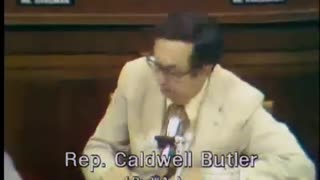 8:57:26
8:57:26
The Memory Hole
17 days agoNixon Impeachment Hearings Day 7 (1974-07-30)
458 -
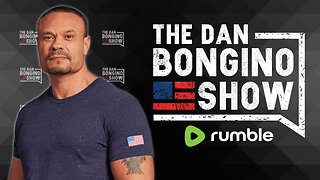 LIVE
LIVE
The Dan Bongino Show
2 hours agoLIVE: The Dan Bongino Radio Show - 02/24/25
39,401 watching -
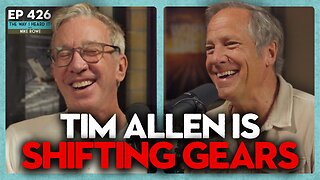 2:08:16
2:08:16
Mike Rowe
3 days agoTim Allen Loves The Ballet | The Way I Heard It with Mike Rowe
10.1K15 -
 1:42:25
1:42:25
Russell Brand
5 hours agoWar, Wokeism & Wealth: The Forces Reshaping Our World – SF542
85.7K24 -
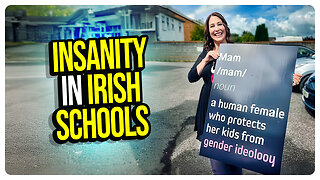 DVR
DVR
vivafrei
5 hours agoMadness in Ireland! The War on Women, Children and the Attempt to Silence Whistleblower Jana Lunden!
37.1K8 -
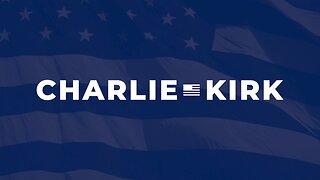 1:01:41
1:01:41
The Charlie Kirk Show
2 hours agoWhat Did YOU Do This Week? + German Elections | Sen. Scott, Sacks, McCarthy | 2.24.2025
58.3K10 -
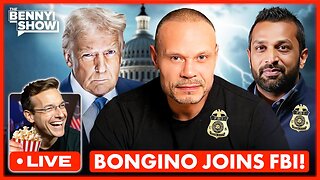 2:15:49
2:15:49
Benny Johnson
3 hours ago🚨 New FBI Deputy Director Dan Bongino Speaking LIVE Right Now After SHOCK Trump, Kash Appointment
153K99 -
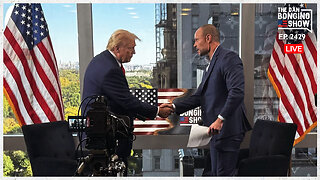 52:36
52:36
The Dan Bongino Show
5 hours agoCutesy Time Is Over (Ep. 2429) - 02/24/2025
1.76M8.05K -
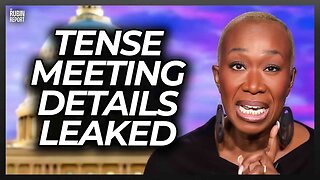 1:10:46
1:10:46
The Rubin Report
4 hours agoLEAKED: Tense Meeting Details Leaked as MSNBC Lays Off Major Hosts
86.8K131 -
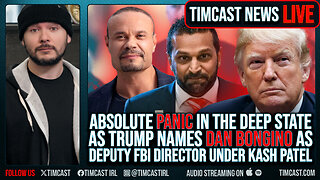 1:03:25
1:03:25
Timcast
5 hours agoDAN BONGINO Named Deputy FBI Director Under Kash Patel, Deep State & Dem IN PANIC | Timcast LIVE
250K100